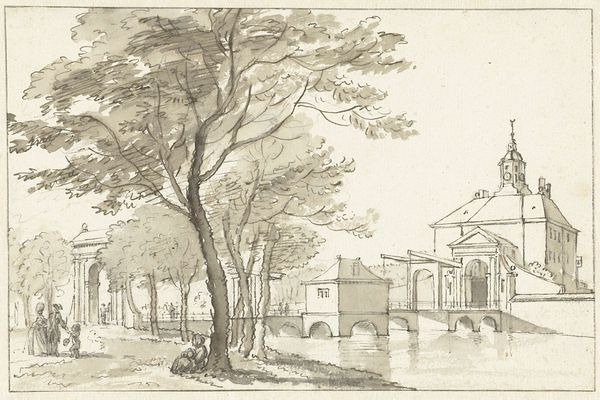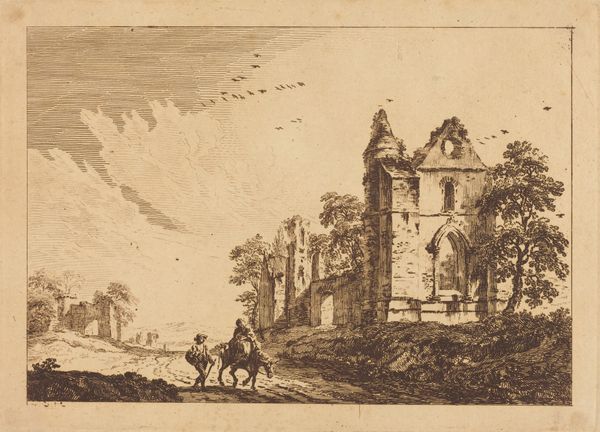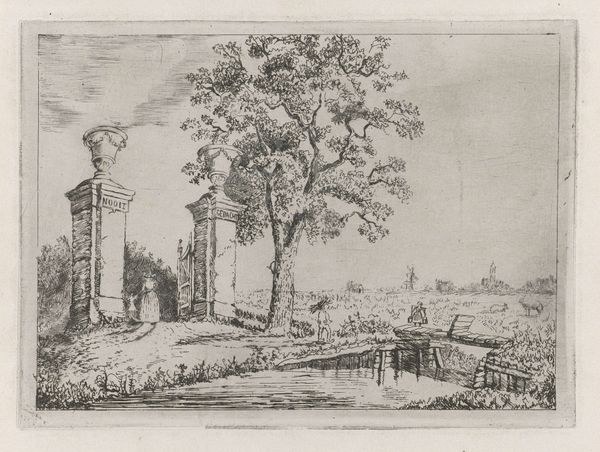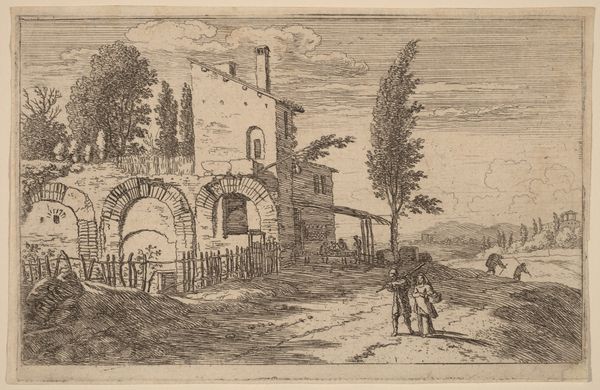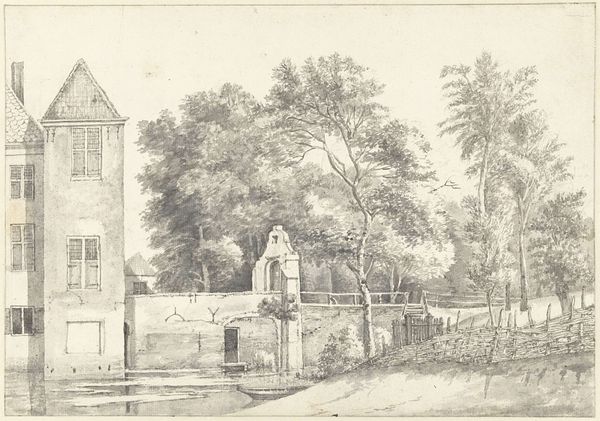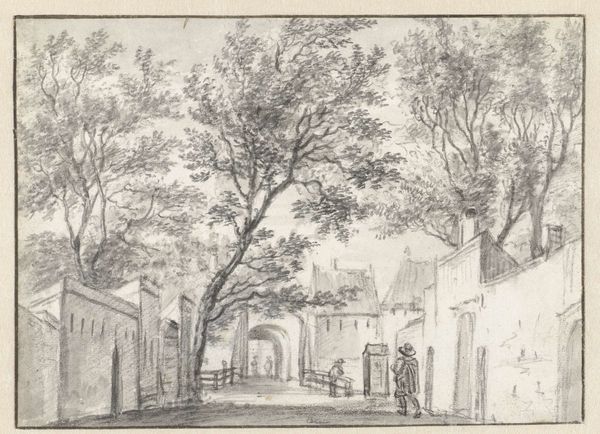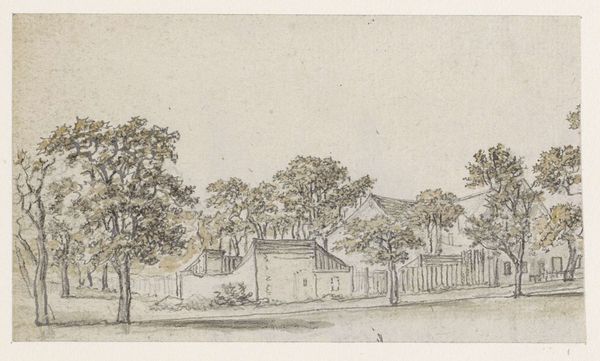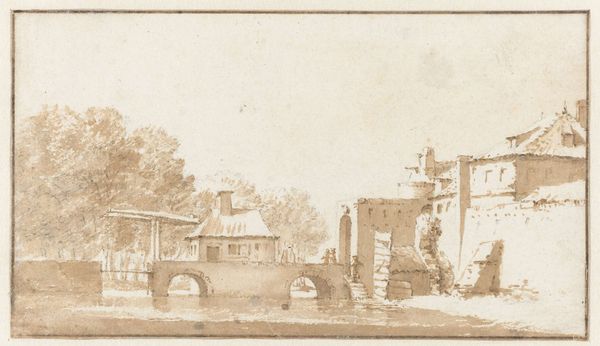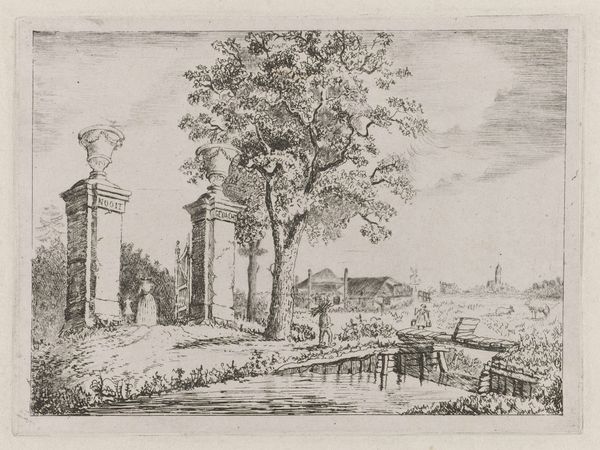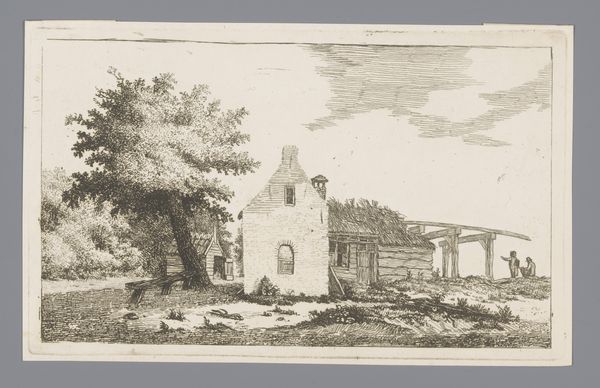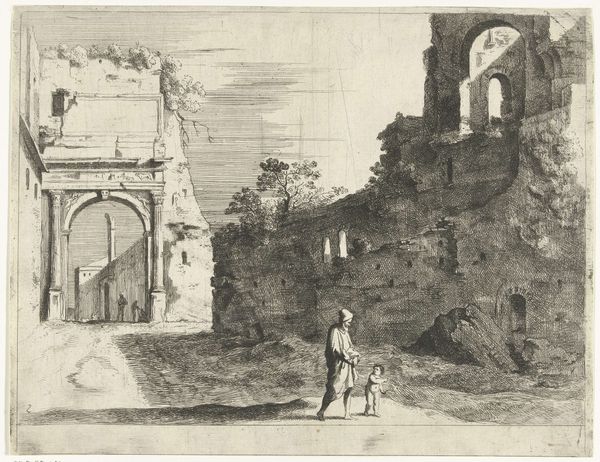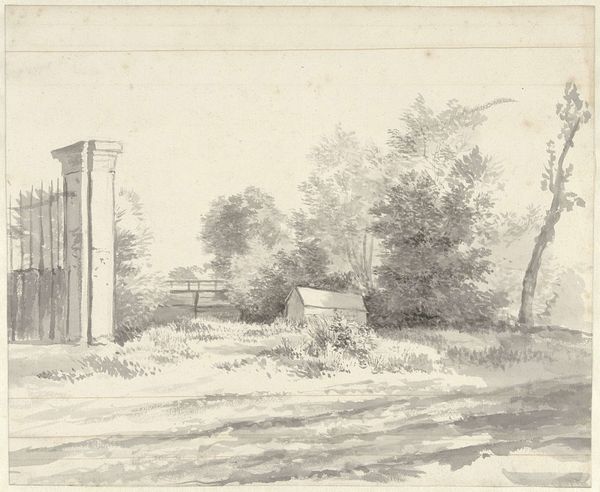
drawing, ink, pencil, architecture
#
drawing
#
pencil sketch
#
landscape
#
ink
#
romanticism
#
pencil
#
cityscape
#
history-painting
#
architecture
Dimensions: height 145 mm, width 189 mm
Copyright: Rijks Museum: Open Domain
Editor: Here we have Daniel Dupré’s "The Temple of Minerva Medica in Rome," created between 1761 and 1817 using ink and pencil. I find the scene so tranquil despite depicting ruins. What do you see in this piece? Curator: It’s a powerful example of Romanticism engaging with the weight of history. The ruins themselves become a focal point for reflecting on time, change, and the impermanence of human achievement. Consider how this contrasts with earlier art movements, like the Renaissance, that celebrated classical architecture as symbols of power and order. Editor: That's a great point. What does the presence of the figures suggest, in relation to these ruins? Curator: Notice how they seem almost dwarfed by the architecture, really underscoring the temporal scale at play here. In the late 18th and early 19th centuries, Rome was increasingly becoming a site for Romantic artists and intellectuals, seeking to confront ideas of sublime beauty found in decay and natural encroachment on classical ideals. How does that influence our modern reading? Editor: So, they are meant to bring attention to both the scale and timeless quality, versus celebrating just architecture. It's like a study in contrasts that engages broader themes. I initially responded to the calm, but that layering makes this far more thoughtful. Curator: Precisely. And the image reflects how societal interpretations and valuation of art evolve. Thinking about this drawing underscores how public institutions—museums like ours— shape the ongoing cultural understanding of pieces like this. Editor: I see! Thanks, it has shifted my focus from personal feel to societal perspective and institutional role. I’ll think about that.
Comments
No comments
Be the first to comment and join the conversation on the ultimate creative platform.
